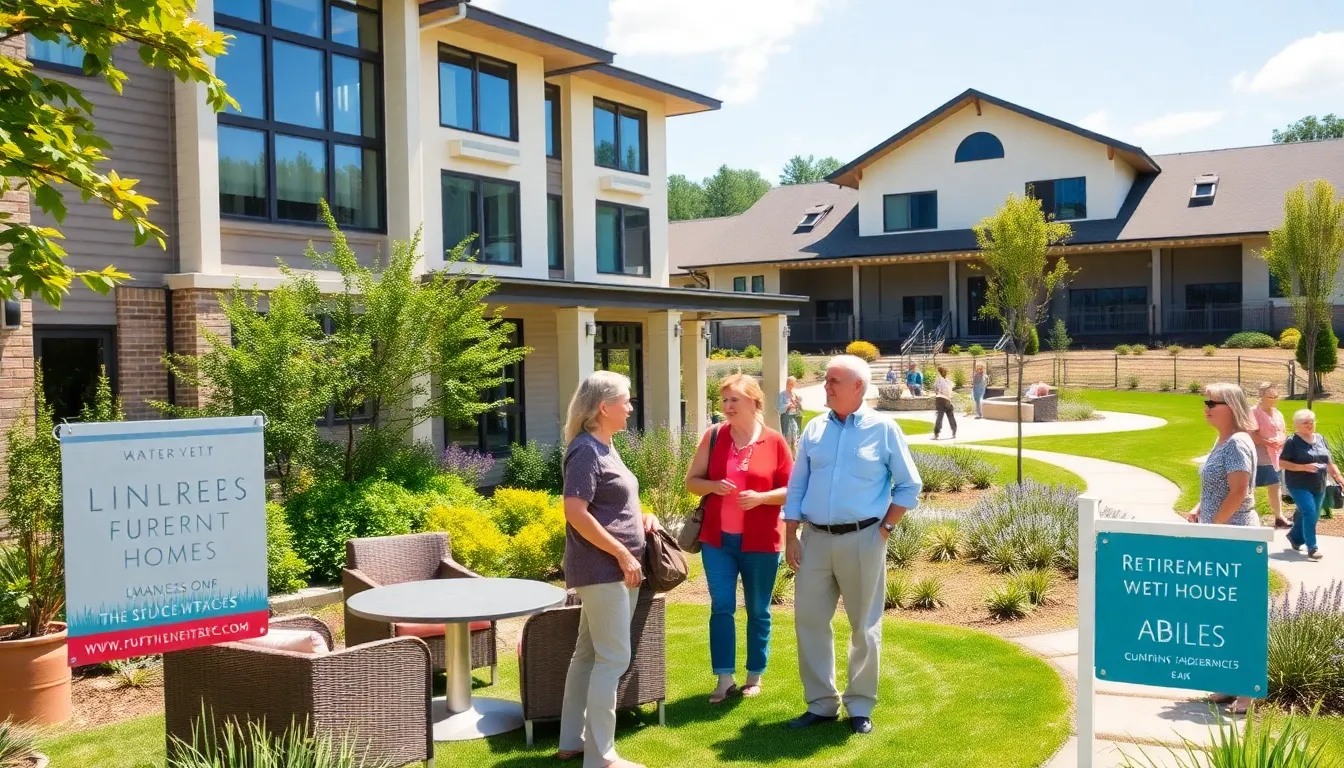Are you pondering your golden years and wondering where to settle down? The prospect of a retirement home may sound like something out of a movie, but it’s increasingly becoming a popular and appealing option for many. In fact, the right retirement home can be a paradise, think community, amenities, and a lifestyle that makes every day feel like a vacation. So let’s unpack what a retirement home for sale really entails, chuckle a bit at the misconceptions, and help you make a sound decision for your future.
Table of Contents
ToggleUnderstanding Retirement Homes

Types of Retirement Homes
Retirement homes come in various flavors, catering to different lifestyles and needs. First up, there are independent living communities designed for active retirees. Here, residents can enjoy a maintenance-free lifestyle while socializing with neighbors. If you prefer a blend of independence and assistance, assisted living facilities offer help with daily activities while still maintaining a level of autonomy. Then there are memory care centers, ideal for individuals with Alzheimer’s or other forms of memory impairment. Each option promises unique benefits, so it’s crucial to find one that fits the lifestyle you envision.
Benefits of Living in a Retirement Home
Picture this: no more lawn mowing on weekends. Retirement homes provide a range of amenities that can give you peace of mind. From social activities like movie nights to fitness classes that keep you spry, these communities foster engagement with like-minded individuals. Not to mention the caretaker services, they’re there to help with chores you might find tedious, allowing for more time spent doing what you love. Plus, many locations boast beautiful grounds and safety features, which can alleviate worries about living alone.
Key Features to Look For
Financial Considerations When Buying
When diving into the world of retirement home buying, finances will inevitably come to the forefront. One key consideration is whether the cost aligns with your budget and long-term financial plans. Calculate not only the purchasing price but also ongoing monthly fees, maintenance costs, and any additional charges that could arise down the line. It’s like when you buy a new gadget, you think you’re just paying for the shiny device, but then there are hidden accessories that add up.
Understanding Costs and Pricing
Now, let’s get into the nitty-gritty. The cost of a retirement home can vary dramatically based on location, amenities, and level of care provided. A basic independent living apartment might range from a few thousand to hundreds of thousands, whereas upscale facilities with luxury accommodations come at a higher price tag. Always ask for a breakdown of costs during the purchasing process, to avoid any surprises that could pop up like unwanted relatives at a family reunion.
Financing Options Available
You’re not alone if you feel overwhelmed by financing. Several options exist, including traditional mortgages, Home Equity Lines of Credit (HELOCs), and sometimes, payment plans offered by retirement communities themselves. Tapping into benefits from veterans’ programs or state assistance can also provide financial relief. It’s wise to consult with a financial advisor specializing in retirement, as they can help illuminate the best paths to take based on your personal financial situation.
Finding the Right Retirement Home
Researching Available Properties
The hunt for the perfect retirement home can feel daunting, but don’t let it stress you out. Start by researching listings online, checking out local market reports, and perhaps consulting with real estate agents who specialize in retirement communities. Sites like Zillow or dedicated retired living websites can offer a plethora of options that might just ring your bell. Consider taking your search offline as well: visiting communities firsthand can provide insights that photos and websites can’t capture.
What to Ask During Your Visit
When you finally find a few prospective retirement homes, the real fun begins, visiting. Treat it like a first date: you want to ask questions to ensure compatibility. Inquire about social activities, staff training, the response time for maintenance requests, and even food options. Don’t hesitate to ask current residents how they feel about their experiences. They can offer some of the most candid insights that brochures and sales pitches might gloss over.
Making the Decision to Buy
Evaluating Your Needs and Preferences
Before sealing the deal, take a moment to reflect on your personal needs and preferences. Will you require additional assistance as time goes by? What about hobbies or interests? Look for places that accommodate not just your current lifestyle, but your future desires too. Think of it like choosing the perfect outfit, what fits today might not be perfect for tomorrow.
Timing the Purchase
Timing is crucial in any purchase, and retirement homes are no exception. The best time to buy is often dictated by market trends, but your personal readiness to transition is just as important. Consider visiting during off-peak seasons when you’re more likely to receive personal attention and potentially snag better pricing. After all, everyone knows the best deals are often found when everyone else is too busy or distracted.


